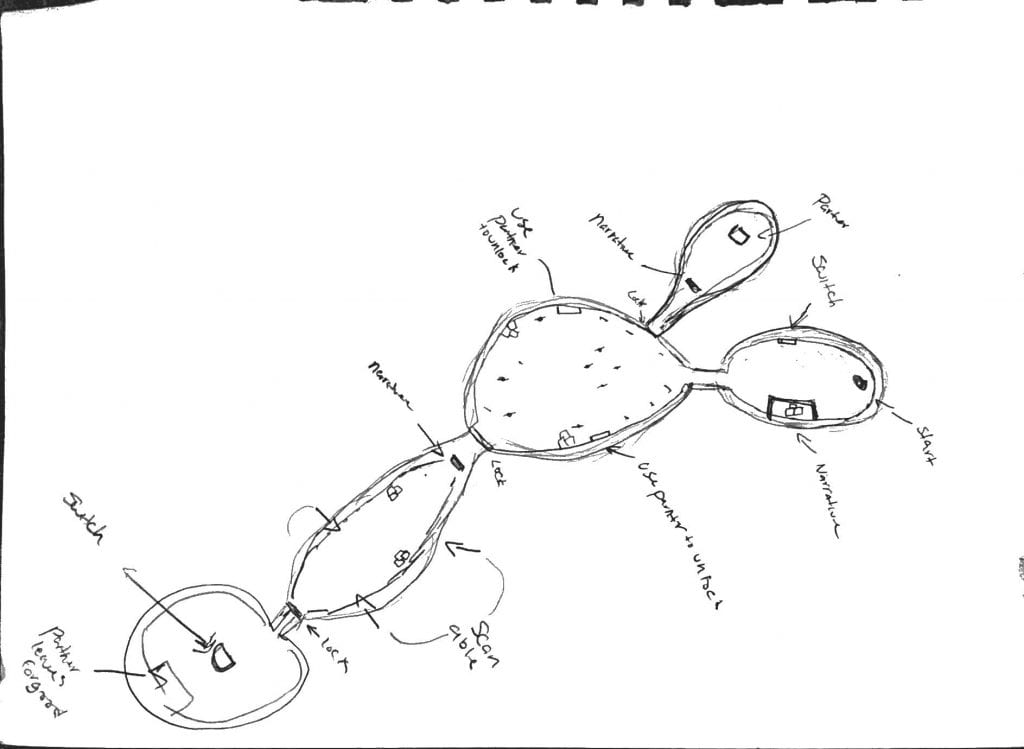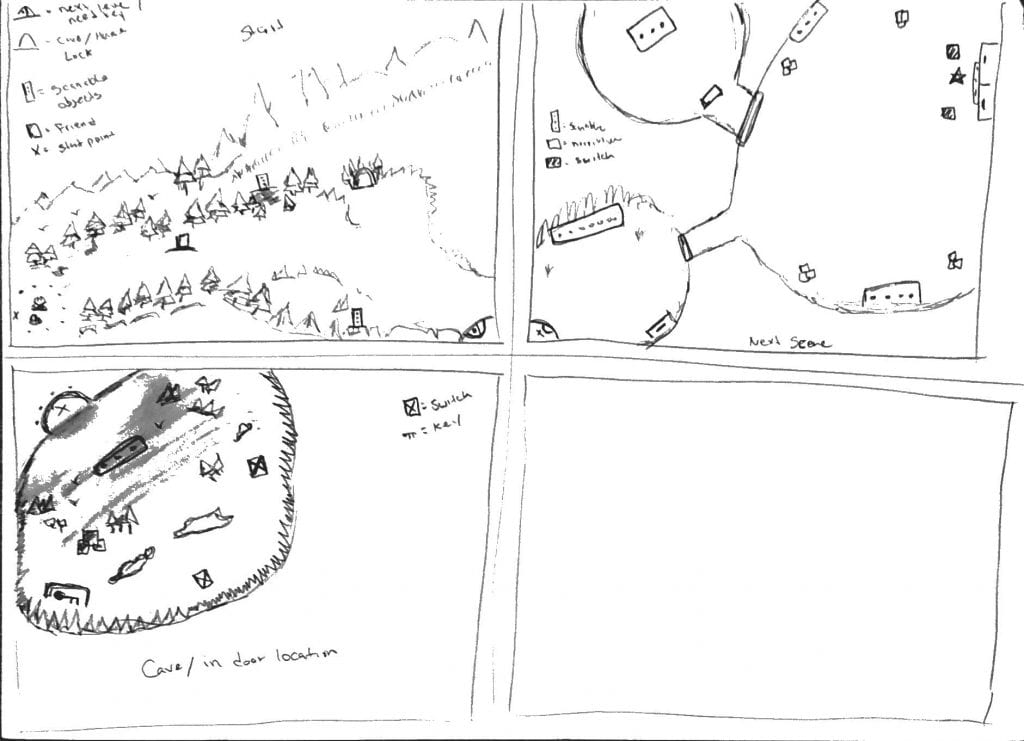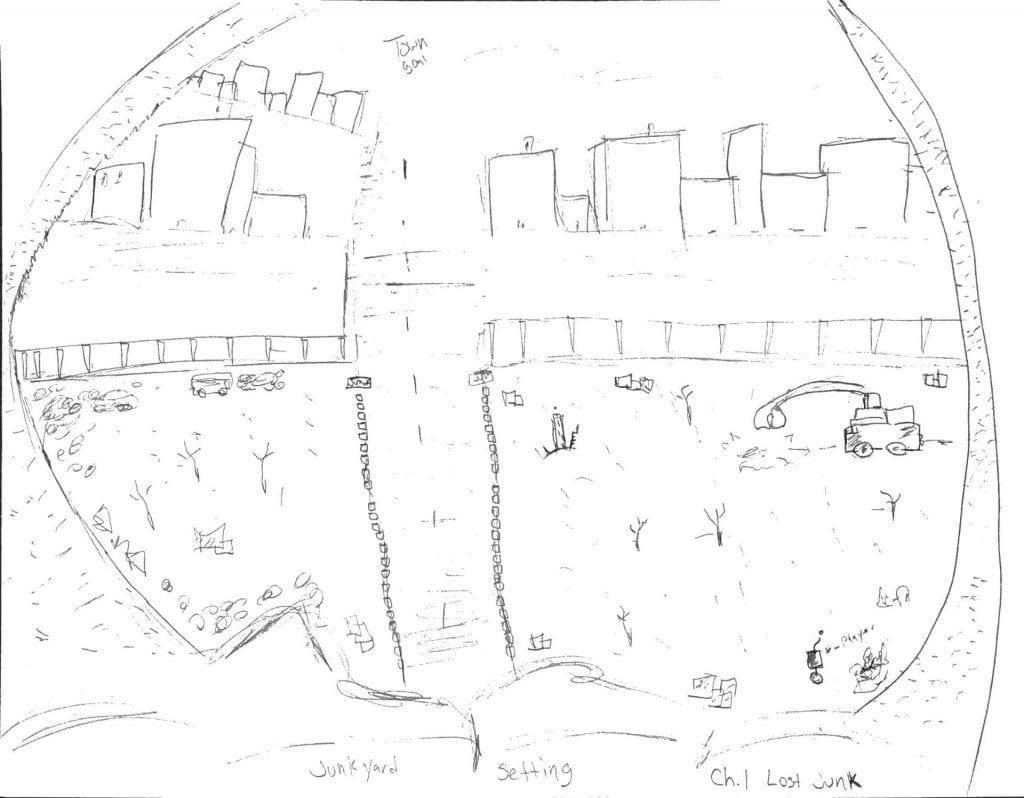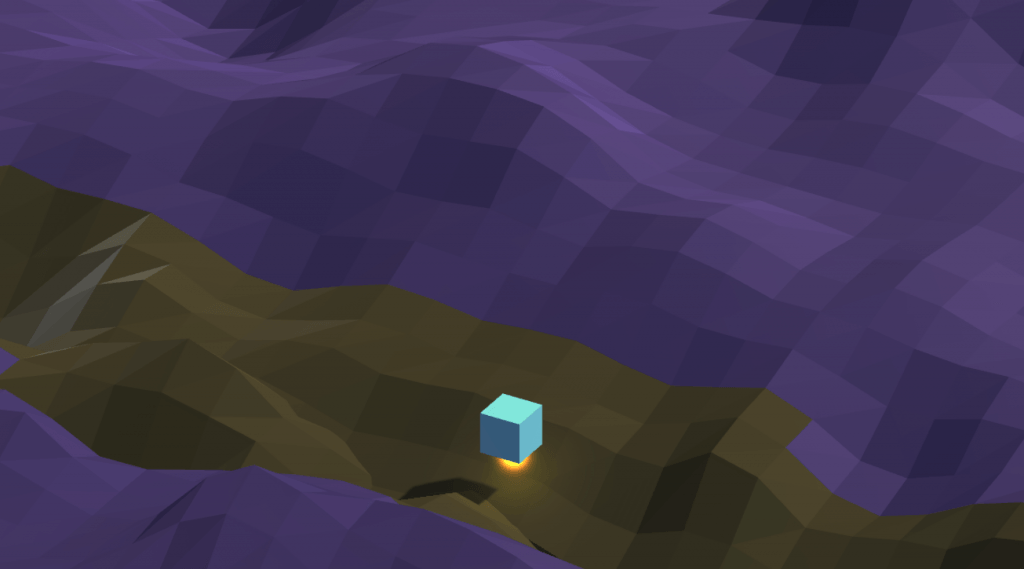Thesis Writing Component
Since the inception of Pong in 1972, the video game industry has firmly established itself in mainstream Western Society. Formally referred to as “interactive entertainment“, video games have been a staple part of Americans lives. As video games get more complex with mechanics and realistic graphics due to technological advancements, one particular area that doesn’t seem to benefit from these advancements are narrative based games. Triple A’s game titles like the Final Fantasy series, Uncharted series, and many others mainly focus on the same old formula of text-based dialogue that has you continue pressing through a series of text that doesn’t immerse your senses or emotion. These are common design principles that are used within the game industry as the rule of thumb when it comes to game design. In the project “Model – 22” I’m pushing for innovation on how we tell a narrative in games with the use of visual interaction and environmental architecture where the user can be engaged by its surrounding. The experience will explore relationships between people who were brought together but slowly drift apart as time goes on. The goal is to provoke a real response where people can embrace how people change over time or dealing with abandonment issues.
I began researching data studies on relationships and abandonment issues, where I found interesting data about the causes and effects in the long term. The studies stated that people who suffer from these situations have a problem expressing their emotion and how they deal with their internal feeling which can lead to self of esteem problems. I then started to look within the Indie scene about how other developers or studios tell stories with their games. I knew for this project that I wanted to tell an interactive story through visual and architecture. So, I began researching games that tell stories with these type ideas but also games that don’t follow the typical convention of text-based dialogue. One of the games I found that follow these criteria was “INSIDE”, which is a game about a young boy who is running through a forest as he is being chased by masked man and dogs. The game has no dialogue at all throughout the experience but you are left wondering a mystery environment figuring out why are these people chasing you. You as the player/user, have to piece together the story by the things you encounter and visually witness within the environments. Another game that I found interesting was “Hyper Light Drifter”, which is about a humanoid who has a heart disease that’s killing him slowly. You as the player/user go on an adventure through a sci-fi world to find a remedy to cure yourself. What makes this game unique is how the game tells its story by the use of pictures. They’re no dialogue but only visual images that are displayed toward you when you’re interacting with people. I found this mechanic or technique to be a brilliant concept on how to challenge people perspective with how they view stories for themselves. After researching the games I begin to analyze data that I found on the internet about A.I characteristics in the real world and their behaviors. I learned that A.I are good with situational problems with their rational thinking mind which is quite interesting for creating depth between the two characters that will be in the game. The goal is to see how can I play with these characteristics between A.I and human to create a unique experience that can showcase emotion like lost, love and regret. I want the android to represent the personal experiences that I had in my life to be the strength of the project impact on people. Since these experience has had a huge impact on my life they will be a guide for creating depth in the environments and the relationships that will be in the game. As I continue to research more about relationships and games for concepts purposes I began to focus on narrowing down the collected data to what type of mechanics should be implemented in the experience. I believe visual technique like symbolism, immersive environments, and picture to picture display are key mechanics that I should explore for the project. Digital experiences like INSIDE, Hyper Light Drifter, and Journey have used these techniques to great effect that has to transcend how we as developers and designers incorporate narrative in games. These techniques or mechanics are crucial material toward the thesis where I learned to analyze them and use them to great detail during the design process.
After learning more about these techniques and mechanics I began thinking about who should be the target audience for this project and how would I display the experience that can have the most impact on people. What I found out is that I will be targeting young adults where they can relate to similar relationships problems or conversational topics that arise in their everyday lives within this digital experience. I hope that the experience can engage young people minds and challenge their thoughts on how do they think relationships are supposed to be in their current environment. The way I want to display this experience is on Mobile/IPAD platform due to it being easily accessible since everyone has these devices with them at all times. Another reason for choosing this platform was about the touching interaction that all portable devices have which I see as being an intimate action that can have the users to feel a closer connection toward the environment. I have been designing the project with portability in mind because I know young people are extremely busy especially in New York City, where everything has to be surrounded by a fast pace ideology. I want the experience to be simple and easy to navigate while having interactivity that is enjoyable within a commuter time frame with hopefully impactful results.
Now that I have finished most of the research that I needed, I began creating paper prototype environments where I could explore the type of visuals and theme aesthetics that best describes the character’s livelihood. I began drawing a rusty/dusty world that could visually feel like a desert or Mars. I want the area surrounding the start of the experience to be a junkyard or forest that has a bunch of electrical parts and debris that gives the visual aesthetics of being forgotten or abandoned. I believe that this would be a great way to symbolize the emotion of the thesis, and also the start of the journey to uncovering the character past. As I continue creating multiple paper sketches experimenting with different points of view from 2-D to 3-D examples I started to formulate a clear direction that the experience would be displayed in a third dimension aesthetics. I soon move on to creating a digital prototype to test camera viewpoints in “Unity” to see how I would like the experience to be a view from the user perspective. After many trials, I decided to program a personal camera system that follows the user/player in the world as I envision it. The next coming steps are to begin prototyping the character movements and interaction mechanics. I think that the characters should have four interaction, for example, interact with objects, gathering information from objects, digital puzzle pieces, and digital conversation. I want to start paper prototyping these interactions to get a solid foundation on how to implement these mechanics in the game.
As I advance in development I started to create 3-D assets in Blender for the world to see how I’m gonna start giving the environment life and personalities. I created a sci-fi environment using simple geometry shapes with vibrant colors to make the world feel gloomy and bright. Then after that, I begin tinkering with “Post-Processing Stack” in Unity to give the assets I made in Blender a particular flat pastel aesthetic. I played around with all the available setting of the stack like bloom, depth of field, distortion, and grain, which helped me get the desired to affect that I envision for my experience. At this point, I moved on to explore how to add the paper prototype mechanics to the game scenes in Unity but came across issues with the mechanics I had conceptually development and design. As I added them I had no way to incorporate the visual story aspects that would make sense, which is the most important thing that I want to showcase in the game. The game felt too similar to other high score mobile games where you just solved a puzzle and move on to the next which I didn’t enjoy or like. I had no space to add a narrative that would make sense with the digital puzzle I created since the mechanic is about rotating wire together it just couldn’t connect to the story content I created for the game. What I mean by this, for example, is that I couldn’t showcase the bond between the characters with this mechanic nor any attachment situation because the characters get lost behind the digital puzzles. It made me question why do we have a character or a story where I can just build tons of puzzle levels like any other game. So, I decided to scrape that mechanic so far and begin working on creating more environments than focus on the most important mechanic which just touches interaction. I found that this is the best approach because I could create many varieties of interaction that can be made to fit any environment or scene you’re in. This helps me narrow the story arcs into small little islands or worlds where you can touch things and see how the characters interact by the cause and effect of the objects you touch.
In conclusion, we learned that the industry follows a copy and paste formula for telling a narrative in games without any real innovation wherein the other hand we see the Indie scene taking a risk and leading the way to create brand new experiences that can shape how we tell stories in the future. As I continue to learn from these great innovators on how to apply these methodologies into my own current work I hope to showcase this experience on the Apple store or Nintendo Switch where I can push these new ideas into the mainstream. The next steps for the project are to continue creating more 3D models and environments that have the same consistency for mood and emotion as the intro level. At the moment I have three main mechanics/interaction that I will continue to develop further and begin working toward my nine levels goal as the end target for the final demo. I want three totally different environments that feel alive and that can be interactive for example having insects flying around that you can swoop away by swiping at them or even birds. I want the environment to feel likes it actually live beside having the characters be a part of it. I also want to begin researching more about typography and how to tell language through symbols. This is something that I have been heavily interested in to see if I could use emoji or sign language as a way to showcase characters conversation and interaction.
Game summary
The story focuses on the life of an android by the name of Model – 22, where he has been abandoned in a dream-like forest without much energy. He notices that his circuit board is damaged and doesn’t recall much from his internal memory about his current circumstances with being in this forest. As he continues to move through the forest he notices a digital server hidden behind a tree trunk where he decides to plug himself to the server and suddenly begins downloading information. A bright white light flashes in his digital mind and he heard a voice call out “Model – 22” hurry up! Can you guide Model – 22 to get the answers that he is looking for?
Game Outline
Player’s play as a character by the named of “Model – 22” who has recently lost his memories but starts regaining them with each interaction. As he interacts can gather small fragments of information about his past. You as the player will interact with those fragments by seeing what they are and understanding why “Model – 22” has been abandon in the forest of forgotten wasted.
Game Mechanics
- Digital fragment: These fragments are objects that the player can interact with which leads to three mini-games that give a visual narrative about the character’s memory.
- Visual Narrative (No-Dialogue) : All the narration in the game will come from symbolism, pictures, and environmental architecture.
- Controls: The game will be played base on Touching the screen.
- Mini Games: The mini-games will encompass all interaction that involves touching the screen. Examples, Putting shatter pieces of digital components together, solving a circuit type puzzle to connect onto the data server to acquire memory. Also interacting with a small glimpse of past events that you have unlocked.
- The objective of the game: Is to find out why you have been abandoned in the forest of forgotten wasted. As you progress toward learning from the environment and surrounding by touching them. You can come to terms with the outcomes that head your way!
Concepts
Unity Concept
Final Look
Final Thesis Presentation




